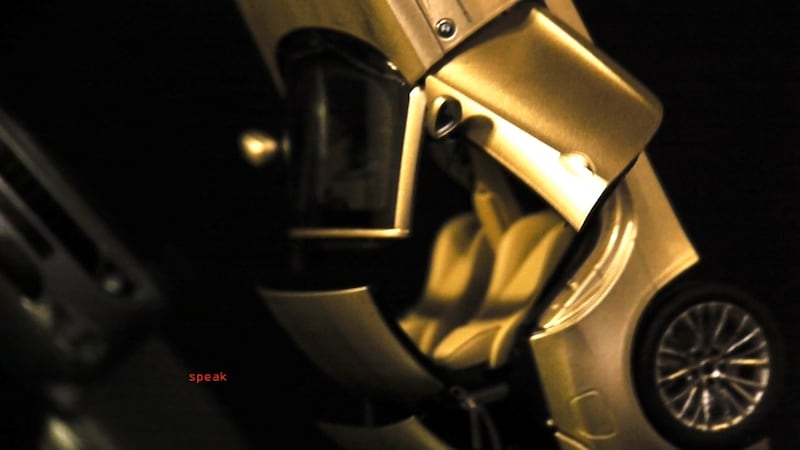What is it? West Hinder is a 2011 video work by Elizabeth Price. The West Hinder Traffic Separation Scheme is an area of the English Channel off the southwest coast. The inspiration for the video goes back to an incident in December 2002, when a cargo vessel, the Tricolour, sank there. It was packed with 2,862 high-end cars. Price's video zeroes in on the chilly location of the sinking and then plunges beneath the surface. She imagines a submarine existence for the drowned automobiles. A voice-over narration is couched in the language and tone of car adverts, spinning yarns of power, masculine sophistication and control. Then, it seems, the computerised control system in each car comes to life and they move through the water in a syncrhonised, choreographed display, a la Busby Berkeley, to the strains of Genesis's Follow You, Follow Me, in an instrumental version produced by Brian Reitzell and Kevin Shields.
How was it done? Price did not dive to the seabed to find the wreck. In fact it was recovered during the following year. Instead, she worked mainly with model cars and archive footage. Her videos are exhaustively researched and painstakingly made. She spends an extraordinary amount of time in her studio shooting and editing, though she resorted to a studio, and some CGI, for West Hinder. She could well be the first artist to recognise the artistic potential of PowerPoint presentations, otherwise the epitome of managerial dullness. Final Cut is also a staple tool. Music is never just an adornment or an extra. Her work is fundamentally rhythmic and her sense of timing is intrinsically musical.
Where can I see it? West Hinder is on view at CCA – Centre for Contemporary Art, Derry-Londonderry, 10-12 Artillery Street, Derry-Londonderry, Until May 12th, cca-derry-londonderry.org/

Is it a typical work by the artist? In its methodology and research-driven approach it is typical, though each work by Price is startlingly different in its own way. The work credited with winning her the Turner Prize in 2012, The Woolworth's Choir of 1979, breath-takingly interweaves three apparently unconnected subjects (medieval church architecture, the 1960s girl group the Shangri-Las, and a fatal conflagration at Manchester Woolworths in 1979). Though generally quite concise, her videos are incredibly compressed, often featuring sequences of imagery so fleeting that they verge on the subliminal. Born in Bradford, Price grew up in Luton and studied art in Oxford, where she was a founder member of the short-lived but highly regarded pop group, Talulah Gosh. She left because she was a reluctant stage performer. After an MFA at London's Royal College of Art she settled into a relatively low-profile life of teaching and making "objects, installations, photographs, texts". When she made her breakthrough into video, to her dismay those who had liked her work before could not follow her, but she persevered. Then her piece User Group Disco was included in two group shows, and the Baltic in Newcastle offered her a solo show. That show earned her the Turner nomination and she has not looked back since.











